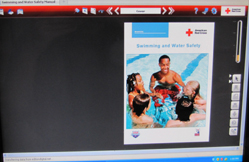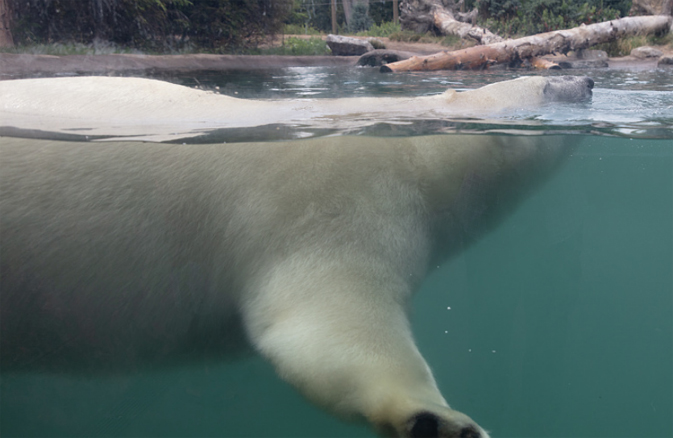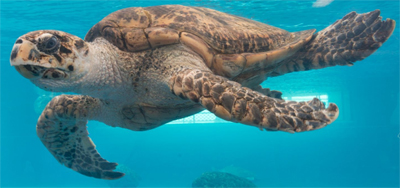Or should we call this: how can I tell if I’m a fast swimmer?
Every athlete likes to compare them-self to others,
either in real competitions,
or against standard times or tests.
Here are some selections to choose from:
https://www.redcrosslearningcenter.org/s/candidate-water-safety
scroll down to Participant Materials and click on and open Swimming and Water Safety Manual.
The Cooper 12 minute swim test is on page 195, where it says “The 12-minute swimming test, devised by Kenneth Cooper, M.D., is an easy, inexpensive way for men and women of all ages to test their aerobic capacity (oxygen consumption) and to chart their fitness program.”
Our pool is 25 yards wide, so if you swam 20 laps it would be 500 yards.
500 yards of freestyle in 12 minutes would be an excellent rating on the Cooper scale for a 60 or more year old man or a 40-49 year old woman.
It would rate good for a 40-49 year old man or a 20-29 year old woman.
It would rate fair for a 20-29 year old man or a 13-19 year old woman.
It would rate poor for a 13-19 year old male.


(This had no index, so I wrote one: Swimming and Water Safety 2009 index ).
If you compare this to the Cooper swim test, remember that the Cooper test can be done with any stroke, and most people do freestyle. Breaststroke and sidestroke are slower. (If we compare the required times for the 2004 Olympic Trials in 200 freestyle and breaststroke we see that breaststroke takes 25% longer than freestyle.)
Plus you need to consider that the Navy Seals test is done along with other tests. If you only have one test to take you can put out all your effort. As a prerequisite to their difficult training, SEAL candidates must complete all these tests (one source said in less than an hour):
500 yards breast- or sidestroke in less than 12 minutes, 30 seconds. (One source for this info said you then get a ten minute rest)
42 push-ups in 2 minutes. (One source said you then get a two minute rest)
50 sit-ups in 2 minutes.(One source said you then get a 2 minute rest)
6 pull-ups.(one source said 8 pull-ups, no time limit with a 10 minute rest)
Run 1.5 miles in 11 minutes, 30 seconds (wearing boots).
A letter to participants in an “Escape from Alcatraz” 1-1/2 mile ocean swim said
“if your time for a mile in a pool is slower than 40 minutes,
we do not recommend you attempt this swim.”
The De Anza pool is 25 yards wide, so 70.4 laps (one width being one lap) would be a mile.
We volunteer as lifeguards at these races and you might want to read advice for lifeguards (and athletes) at open water swims at Escape from Alcatraz ‘Sharkfest’ swim volunteering.
A mile is 1,609.334 meters, again 70.4 laps of the width of the De Anza College pool and many other “olympic”-sized pools.
In 2021 Katie Ledecky swam 1,500 meters in 15 minutes 37.34 seconds, to earn the first Olympic gold medal for women swimming that distance in the olympics.
1,500 meters is 30 lengths of the De Anza pool.
But we have sometimes tried a Navy Seal swim 500 yards – Breast or Side Stroke test (done with other tests including a 1.5 mile run) of
enlisted: optimum 9:30 minimum 12:30
officer: optimum 8:25 minimum 12:30
They call the swimming pool where you take the test the “Combat Training Tank.”
______________________________________
U.S. Navy Diver physical fitness test from Wikipedia
“The test consists of the following carried out in the order given:
Swim 500 yards (or 450 m) utilizing only combat side stroke or breast stroke within 12 minutes 30 seconds (candidates are allowed to push off the sides when turning. However, if the candidate uses the bottom to stand or rest, they will fail the test).
10-minute rest period.
Perform 50 push-ups within 2 minutes (Upper arms must parallel deck at dip and arms locked out at the top of the rep).
2-minute rest period.
Perform 50 curl-ups within 2 minutes (Bent knees. Candidates hands must stay on the collarbone and the elbows must touch the knees).
2-minute rest period.
Perform 6 pull-ups within 2 minutes (no kipping or swinging is allowed and the chin must clear the top of the bar on each repetition).
10-minute rest period.
Run 1.5 miles (2.414 km) within 12 minutes 30 seconds.”
______________________________________
A Samurai was able to swim almost 75 yards underwater on one breath.
______________________________________
A more effective pull means it take fewer pulls to cover a given distance. My swim students take 14 to over 40 pulls to get across the 25 yard width of the pool. Olympic champion Katie Ledecky usually needs 38 to 39 strokes to swim the 50 meter length of an Olympic-sized pool.
Look at the National Senior Games website for minimum performance standards for competitors in archery, golf, swimming, race walk and many track and field events.
From the official sports rules book, 2025
50 yard freestyle minimum performance standards
ages 50-54 Men = 27.51 Women = 33.08
ages 55-59 Men = 28.80 Women = 33,08
ages 60-64 Men = 29.08 Women = 33.70
ages 65-69 Men = 29.79 Women = 35.65
ages 70-74 Men = 31.05 Women 39.39
ages 75-79 Men = 36.80 Women 46.24
ages 80-84 Men = 41.40 Women 56.16
ages 85-89 Men= 1:05.77 Women = 1:08.67
ages 90+ Men = 1:34.95 Women = 2:30.20
Most years the competitions include: Backstroke: 50-, 100-, 200-Yard, Breaststroke: 50-, 100-, 200-Yard, Butterfly: 50-, 100-Yard, Freestyle: 50-, 100-, 200-, 500-Yard, Individual Medley: 100-, 200- 400- Yard,
______________________________________
From the official Sports Rules book 2019 (with a few changes from 2017 as shown below).
Example: 50 yard freestyle
age 50-54: men 27.51 women 33.08
age 55-59: men 28.80 women 34.39
age 60-64: men 29.08 women 34.39
age 65-69: men 30.34 women 37.05
age 70-74: men 34.35 women 41.40
age 75-79: men 36.80 women 47.49
age 80-84: men 41.40 women 56.16
age 85-89: men 1:13.08 women 1:08.67
age 90+: men 1:34.95 women 2:30.20
______________________________________
From the Official Sports Rules Book 2017.
Example: 50 yard freestyle
age 50-54: men 27.51 women 33.08
age 55-59: men 28.80 women 34.39
age 60-64: men 29.08 women 34.39
age 65-69: men 30.34 women 40.60
age 70-74: men 34.40 women 41.40
age 75-79: men 36.80 women 48.10
age 80-84: men 41.40 women 56.16
age 85-89: men 1:21.20 women 1:08.67
age 90+: men 1:34.95 women 2:30.20
“Jump / dive into deep water
Swim 50 metres in less than 60 seconds
Swim 100 metres continuously on front and back in deep water
Tread water for 30 seconds
Surface dive to the floor of the pool
Climb out unaided without ladder / steps and where the pool design permits.”
“Position requirements for employment include the following:
• Able to swim 600 yards in a pool in 10 minutes or less
• Able to run 1.5 miles on a track in 12 minutes or less”
Again, our college “Olympic” sized pool is 25 yards wide, so if you swam 24 laps it would be 600 yards.
New York city required all guards be able to swim “50 yards in 35 seconds with proper form.” Pool guards also needed to swim 440 yards in 7 minutes, 40 seconds and beach guards in 6 minutes, 40 seconds. The beach guards also needed to complete a 300 yard ocean swim.
UCLA lifeguards had a test of 50 meter head-up crawl in 39.5 seconds and finish a 200 meter individual medley (substituting sidestroke for the fly) in 3:55 or less.
Seattle Parks and Rec had a test of 50 yards head-up crawl in 45 secs.
Some Arizona lifeguards were required to do a 500 yard swim in 12 minutes and tread water with arms crossed for 3 minutes.
An ocean lifeguard pretest consisted of a 1 mile beach run within 8 minutes followed immediately by a quarter mile (just under 400 meters) ocean swim within 8 minutes. Another ocean lifeguard test asked for a 500 meter ocean swim in 10 minutes or less.
To work on a beach in Maine, lifeguards must be able to swim 500 yards in 10 minutes and run 1 1/2 miles in 12 minutes.
Are animals faster swimmers than you?
Umbra, a formerly stray dog, swam a mile in 28.5 minutes and completed a Masters lake swim in Chicago of 3.1 miles in 77 minutes.
Olympic swimmers have been clocked at top speeds of just over 4 mph.
Sea turtles can swim at 20 miles per hour.
Tuna can hit 62 mph. They can swim at 9 mph for an indefinite time.
Elephants can swim 20 miles or more per day. They use their trunks as snorkels.
According to the SeaWorld/Busch Gardens Animal Information Database
Dolphins swim at 40 knots and up (about 45 miles per hour).
Generally sharks swim at speeds less than 5 kph (about 3 mph). For the most part, bottom-dwelling sharks are slow-swimming. Makos are among the fastest sharks, reaching speeds up to 48 kph (30 mph).

“Polar bears are strong swimmers; they swim across bays or wide leads without hesitation. They can swim for several hours at a time over long distances. They’ve been tracked swimming continuously for 100 km (62 miles)
A polar bear’s front paws propel them through the water dog-paddle style. The hind feet and legs are held flat and are used as rudders.
Polar bears can obtain a swimming speed of 10 kph (6.2 mph)”
“Harbor seals swim with all four flippers: their hind flippers propel them forward, and their foreflippers help them steer.
Harbor seals can swim forward and upside-down. They rarely swim backward.
Harbor seals can swim up to 19 kph (12 mph), but they generally cruise at slower speeds.”
The NPS says: “Muskrats have been observed swimming underwater for up to 17 minutes, surfacing for three seconds, and then going back underwater for another 10 minutes. Otters can remain submerged for several minutes, dive to 55 feet and swim up to a quarter-mile underwater.”
Moose, who are faster swimmers than humans
“. . . moose are incredible swimmers, at least as hoofed animals go. They are capable of hitting speeds of at least six miles per hour. That sounds like no more than a jogging speed for humans, but most humans can only swim two miles per hour.
High School swimmers hit three to four miles per hour.
Olympic swimmers win medals above five miles per hour.”
have built-in lifejackets
“Moose . . . have thick fur coats with long hollow hairs to insulate them down to temperatures of -60F. This also makes moose fur tremendously buoyant. All the air molecules trapped in moose fur do what air wants to do in water – rise to the surface. So the coat of a moose acts as a lifejacket, a constant force that tugs the moose to the surface.”
https://www.tetonscience.org/can-moose-really-dive/
For a change of pace try the Water Polo Individual Medley:
head up backstroke with eggbeater kick
triple kick breaststroke
head-up freestyle
butterfly arms with breaststroke kick
There are a few more statistics at: History of swimming section
Two thirds of drowning victims are good swimmers. Why you should wear a lifejacket.
Links to current rules and regulations for swimming, water polo and triathlons are at: Swim classes FAQs .
see also: Swim workout vocabulary
United States Navy Physical Readiness test
swim portion as of 10 October 2002
(Test site elevation LESS than 5,000 ft above sea level)
The De Anza pool is 25 yards wide, so 20 laps (one width being one lap) would be 500 yards.
Males: Age 17-19 years
500 yd swim 450-m swim
Outstanding High 6:30 6:20
Outstanding Medium 6:45 6:35
Outstanding Low 7:15 7:05
Excellent High 7:45 7:35
Excellent Medium 8:15 8:05
Excellent Low 8:30 8:20
Good High 9:15 9:05
Good Medium 10:30 10:20
Good Low 11:15 11:05
Satisfactory High 11:45 11:35
Satisfactory Medium 12:15 12:05
Probationary 12:45 12:35
Females: Age 17-19 years
500-yd swim, 450-m swim
Outstanding High .6:45 6:35
Outstanding Medium . 7:45 7:35
Outstanding Low 8:30 8:20
Excellent High 9:00 8:50
Excellent Medium 9:30 9:20
Excellent Low 9:45 9:35
Good High 10:45 10:35
Good Medium 12:00 11:50
Good Low . 13:00 12:50
Satisfactory High.13:15 13:05
Satisfactory Medium . 13:45 13:35
Probationary .14:15 14:05
Males: Age 20-24 years
500-yd swim 450-m swim
Outstanding High . 6:30 6:20
Outstanding Medium . 7:00 6:50
Outstanding Low . 7:30 7:20
Excellent High 8:00 7:50
Excellent Medium 8:15 8:05
Excellent Low 8:45 8:35
Good High 9:30 9:20
Good Medium 10:30 10:20
Good Low 11:30 11:20
Satisfactory High 12:00 11:50
Satisfactory Medium 12:15 12:05
Probationary 13:00 12:50
Females: Age 20-24 years
500-yd swim 450-m swim
Outstanding High 7:15 7:05
Outstanding Medium 8:00 7:50
Outstanding Low 8:45 8:35
Excellent High 9:15 9:05
Excellent Medium 9:45 9:35
Excellent Low 10:00 9:50
Good High 11:00 10:50
Good Medium 12:15 12:05
Good Low 13:15 13:05
Satisfactory High 13:45 13:35
Satisfactory Medium 14:00 13:50
Probationary 14:30 14:20
Males: Age 25-29 years
500-yd swim 450-m swim
Outstanding High 6:38 6:28
Outstanding Medium 7:08 6:58
Outstanding Low 7:38 7:28
Excellent High 8:08 7:58
Excellent Medium 8:23 8:13
Excellent Low 8:53 8:43
Good High 9:38 9:28
Good Medium 10:38 10:28
Good Low 11:38 11:28
Satisfactory High 12:08 11:58
Satisfactory Medium 12:23 12:13
Probationary 13:08 12:58
Females: Age 25-29 years
500-yd swim 450-m swim
Outstanding High 7:23 7:13
Outstanding Medium 8:15 7:58
Outstanding Low 9:00 8:50
Excellent High 9:30 9:20
Excellent Medium 10:00 9:50
Excellent Low 10:15 10:05
Good High 11:15 11:05
Good Medium 12:30 12:20
Good Low 13:30 13:20
Satisfactory High 13:53 13:43
Satisfactory Medium 14:15 14:05
Probationary 14:45 14:35
Males: Age 30-34 years
500-yd swim 450-m swim
Outstanding High 6:45 6:35
Outstanding Medium 7:15 7:05
Outstanding Low 7:45 7:35
Excellent High 8:15 8:05
Excellent Medium 8:30 8:20
Excellent Low 9:00 8:50
Good High 9:45 9:35
Good Medium 10:45 10:35
Good Low 11:45 11:35
Satisfactory High 12:15 12:05
Satisfactory Medium 12:30 12:20
Probationary 13:15 13:05
Females: Age 30-34 years
500-yd swim 450-m swim
Outstanding High 7:30 7:20
Outstanding Medium 8:30 8:20
Outstanding Low 9:15 9:05
Excellent High 9:45 9:35
Excellent Medium 10:15 10:05
Excellent Low 10:30 10:20
Good High 11:30 11:20
Good Medium 12:45 12:35
Good Low 13:45 13:35
Satisfactory High 14:00 13:50
Satisfactory Medium 14:30 14:20
Probationary 15:00 14:50
Males: Age 35-39 years
500-yd swim 450-m swim
Outstanding High 6:53 6:43
Outstanding Medium 7:23 7:13
Outstanding Low 7:53 7:43
Excellent High 8:23 8:13
Excellent Medium 8:38 8:28
Excellent Low 9:08 8:58
Good High 9:53 9:43
Good Medium 10:53 10:43
Good Low 11:53 11:43
Satisfactory High 12:23 12:13
Satisfactory Medium 12:38 12:28
Probationary 13:23 13:13
Females: Age 35-39 years
500-yd swim 450-m swim
Outstanding High 7:45 7:35
Outstanding Medium 8:38 8:28
Outstanding Low 9:30 9:20
Excellent High 10:00 9:50
Excellent Medium 10:23 10:13
Excellent Low 10:45 10:35
Good High 11:45 11:35
Good Medium 12:53 12:43
Good Low 14:00 13:50
Satisfactory High 14:15 14:05
Satisfactory Medium 14:38 14:28
Probationary 15:15 15:05
Males: Age 40-44 years
500-yd swim 450-m swim
Outstanding High 7:00 6:50
Outstanding Medium 7:30 7:20
Outstanding Low 8:00 7:50
Excellent High 8:30 8:20
Excellent Medium 8:45 8:35
Excellent Low 9:15 9:05
Good High 10:00 9:50
Good Medium 11:00 10:50
Good Low 12:00 11:50
Satisfactory High 12:30 12:20
Satisfactory Medium 12:45 12:35
Probationary 13:30 13:20
Females: Age 40-44 years
500-yd swim 450-m swim
Outstanding High 8:00 7:50
Outstanding Medium 8:45 8:35
Outstanding Low 9:45 9:35
Excellent High 10:15 10:05
Excellent Medium 10:30 10:20
Excellent Low 11:00 10:50
Good High 12:00 11:50
Good Medium 13:00 12:50
Good Low 14:15 14:05
Satisfactory High 14:30 14:20
Satisfactory Medium 14:45 14:35
Probationary 15:30 15:20
Males: Age 45-49 years
500-yd swim 450-m swim
Outstanding High 7:08 6:58
Outstanding Medium 7:38 7:28
Outstanding Low 8:08 7:58
Excellent High 8:38 8:28
Excellent Medium 8:53 8:43
Excellent Low 9:23 9:13
Good High 10:08 9:58
Good Medium 11:08 10:58
Good Low 12:08 11:58
Satisfactory High 12:38 12:28
Satisfactory Medium 12:53 12:43
Probationary 13:38 13:28
Females: Age 45-49 years
Outstanding High 8:15 8:05
Outstanding Medium 9:00 8:50
Outstanding Low 9:53 9:43
Excellent High 10:23 10:13
Excellent Medium 10:45 10:35
Excellent Low 11:08 10:58
Good High 12:15 12:05
Good Medium 13:15 13:05
Good Low 14:30 14:20
Satisfactory High 14:45 14:35
Satisfactory Medium 15:00 14:50
Probationary 15:38 15:28
Males: Age 50-54 years
Outstanding High 7:15 7:05
Outstanding Medium 7:45 7:35
Outstanding Low 8:15 8:05
Excellent High 8:45 8:35
Excellent Medium 9:00 8:50
Excellent Low 9:30 9:20
Good High 10:15 10:05
Good Medium 11:15 11:05
Good Low 12:15 12:05
Satisfactory High 12:45 12:35
Satisfactory Medium 13:00 12:50
Probationary 13:45 13:35
Females: Age 50-54 years
Outstanding High 8:30 8:20
Outstanding Medium 9:15 9:05
Outstanding Low 10:00 9:50
Excellent High 10:30 10:20
Excellent Medium 11:00 10:50
Excellent Low 11:15 11:05
Good High 12:30 12:20
Good Medium 13:30 13:20
Good Low 14:45 14:35
Satisfactory High 15:00 14:50
Satisfactory Medium 15:15 15:05
Probationary 15:45 15:35
Males: Age 55-59 years
Outstanding High 7:17 7:07
Outstanding Medium 7:47 7:37
Outstanding Low 8:17 8:07
Excellent High 8:50 8:40
Excellent Medium 9:15 9:05
Excellent Low 9:47 9:37
Good High 10:40 10:30
Good Medium 11:35 11:25
Good Low 12:33 12:23
Satisfactory High 13:00 12:50
Satisfactory Medium 13:25 13:15
Probationary 13:55 13:45
Females: Age 55-59 years
Outstanding High 8:45 8:35
Outstanding Medium 9:30 9:20
Outstanding Low 10:07 9:57
Excellent High 10:37 10:27
Excellent Medium 11:15 11:05
Excellent Low 11:25 11:15
Good High 12:45 12:35
Good Medium 13:45 13:35
Good Low 15:00 14:50
Satisfactory High 15:15 15:05
Satisfactory Medium 15:30 15:20
Probationary 16:00 15:50
Males: Age 60-64 years
Outstanding High 7:20 7:10
Outstanding Medium 7:50 7:40
Outstanding Low 8:20 8:10
Excellent High 8:55 8:45
Excellent Medium 9:30 9:20
Excellent Low 10:05 9:55
Good High 11:00 10:50
Good Medium 11:55 11:45
Good Low 12:50 12:40
Satisfactory High 13:15 13:05
Satisfactory Medium 13:40 13:30
Probationary 14:05 13:55
Females: Age 60-64 years
Outstanding High 9:00 8:50
Outstanding Medium 9:45 9:35
Outstanding Low 10:15 10:05
Excellent High 10:45 10:35
Excellent Medium 11:30 11:20
Excellent Low 11:35 11:25
Good High 13:00 12:50
Good Medium 14:00 13:50
Good Low 15:15 15:05
Satisfactory High 15:30 15:20
Satisfactory Medium 15:45 15:35
Probationary 16:15 16:05
Males: Age 65+ years
Outstanding High 7:25 7:15
Outstanding Medium 7:55 7:45
Outstanding Low 8:25 8:15
Excellent High 9:05 8:55
Excellent Medium 9:45 9:35
Excellent Low 10:30 10:20
Good High 11:25 11:15
Good Medium 12:20 12:10
Good Low 13:20 13:10
Satisfactory High 13:40 13:30
Satisfactory Medium 14:00 13:50
Probationary 14:15 14:05
Females: Age 65+ years
Outstanding High 9:15 9:05
Outstanding Medium 10:00 9:50
Outstanding Low 10:23 10:13
Excellent High 10:52 10:42
Excellent Medium 11:45 11:35
Excellent Low 11:50 11:40
Good High 13:15 13:05
Good Medium 14:15 14:05
Good Low 15:30 15:20
Satisfactory High 15:45 15:35
Satisfactory Medium 16:00 15:50
Probationary 16:30 16:20





